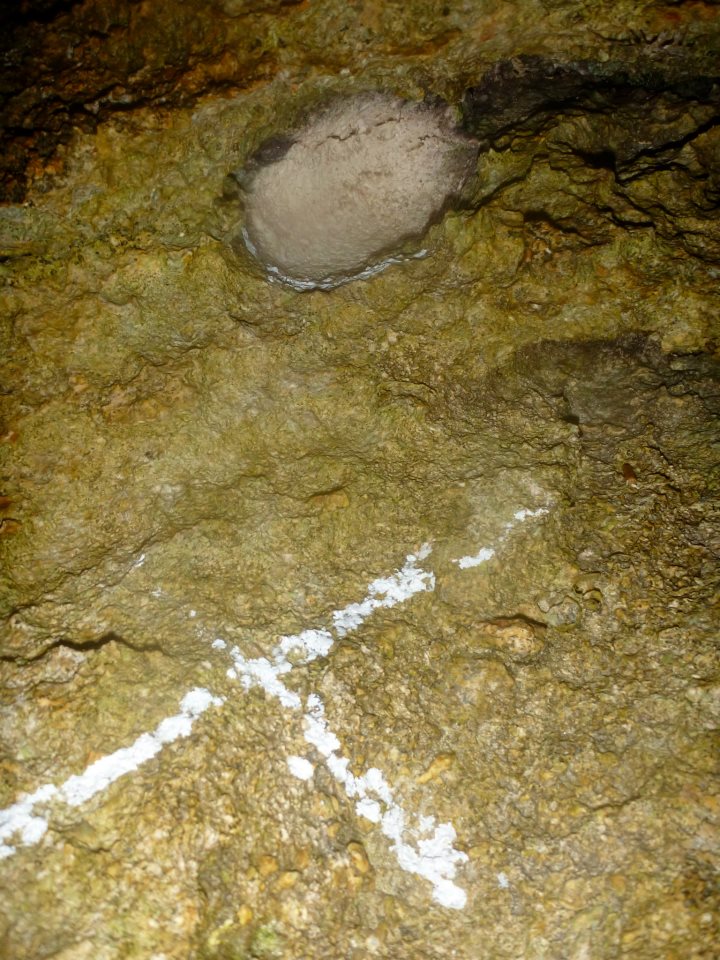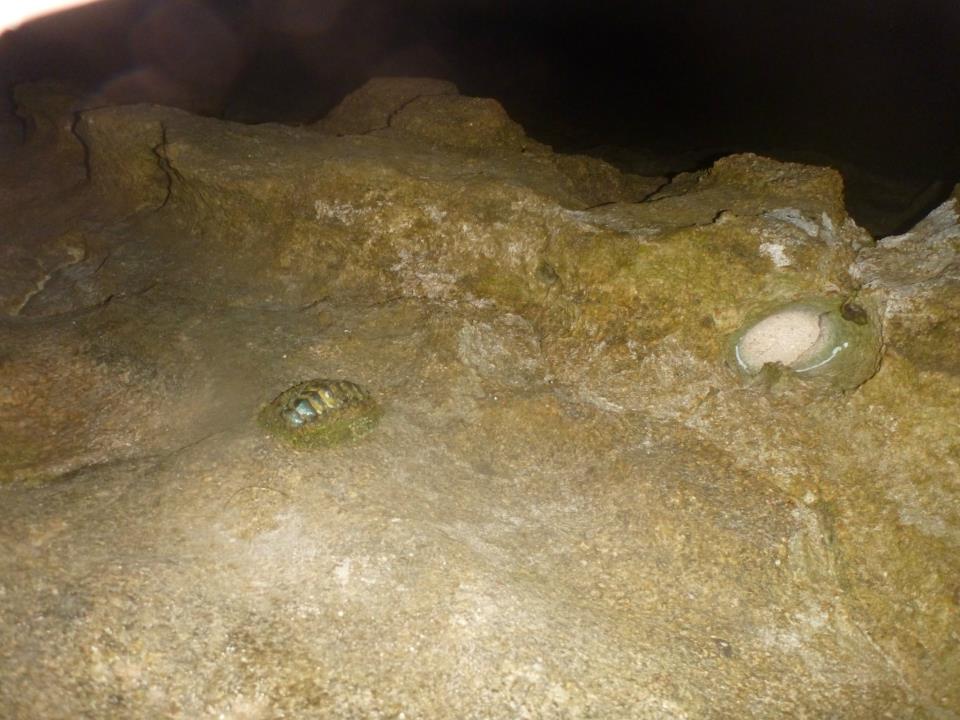Behaviour
Locomotion
Most chitons, including A. gemmata are slow –moving animals and can creep over very rough surfaces without losing attachment to the substratum. (17) Using their foot musculature, A. gemmata and other chitons are able to slowly creep forward using antero-posterior (retrograde) contractile waves. (17) Antagonistic contraction and relaxation of successive longitudinal muscle fibres in the foot is what allows for the contractile waves and therefore the locomotion of the animal. (3) The strong foot and girdle muscles allow for strong adhesion to the substratum and it is difficult to remove the chiton without damaging the animal. (17) Once the chiton is dislodged from the substratum its reaction is to curl up tightly (in an armadillo roll) to protect its soft musculature. (3)
Homing
Chitons are relatively inactive animals, a feature typical of many grazing animals. (3) Some species of chiton, including A. gemmata, remain in one area for a long time and actively dig out a scar, or depression, where the individual returns every morning after foraging (Figure 1 & 2). (4-7, 9) The homescars are quite personal, where individuals have been seen to defend against conspecific intruders. (4-7)
 Figure 1. A homescar of an A. gemmata individual
Figure 1. A homescar of an A. gemmata individual

Figure 2. A. gemmata actively foraging away from its homescar
A big question that has been revisited over the years, is how exactly does A. gemmata find its way back to its individual homescar after each night of foraging? Many studies have suggested that the behaviour of homing is established via trail following. (5,6) A. gemmata is known to find its way back to its homescar by following its outgoing trail, (5,6) however a study recently conducted on Heron Island suggests that the light receptors (aesthetes) in the shells of A. gemmata may contribute to the homing device seen in this species (Athousis 2011, unpublished work).
30 individual chitons were marked on Heron Island as well as their homescars to determine if this population shows the well known homing behaviour (Figure 3). 19 of these marked individuals were used as a control, while 11 were used as a treatment. The treatment individuals had their shells (or aesthetes) blacked out with nail polish so the light receptors were disabled (Figure 4) (nail polish was used as it will wash off after a few days- being non-lethal to the animals). The homescar of each individual was marked on a Global Positioning System (GPS) (Figure 5), and each day at low tide, the homescars were recorded if each individual was present (returned after the foraging night). This was done for three days to get replicates.
Figure 3. An example of a marked chiton and homescar
Figure 4. Example of a blacked-out chiton
Figure 5. GPS coordinates of the 30 marked chitons
The results from the study indicate the 'backed-out' or treatment chitons showed a significant difference to the control chitons. Less of the blacked-out chitons returned to their homescar (Figure 6). Which suggests that the aesthetes in their shell help with their homing device.
Figure 6. The percent of chitons that returned to
their homescar after each foraging night. Blue bar represent control
chitons and the white bar represents blacked-out chitons. |